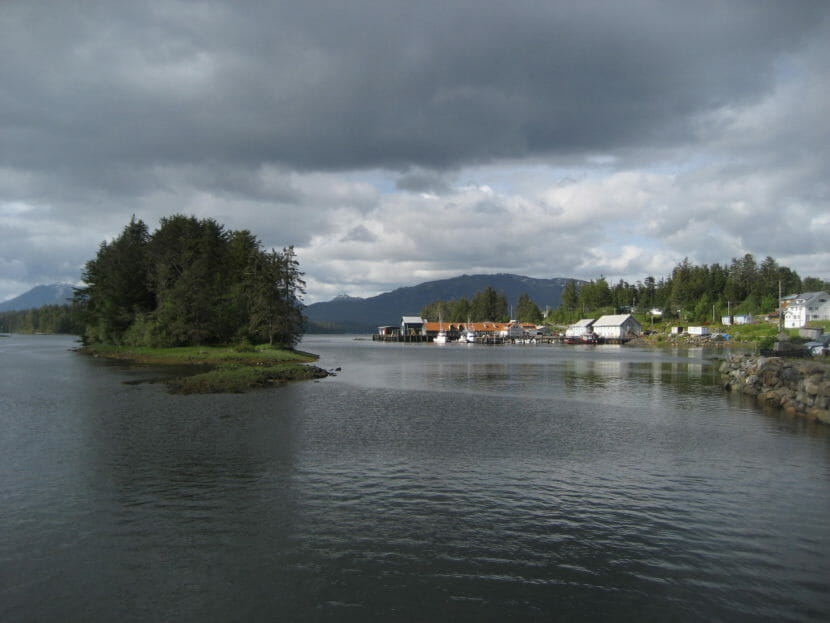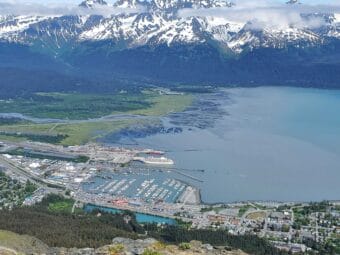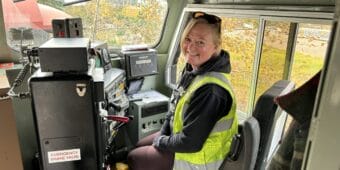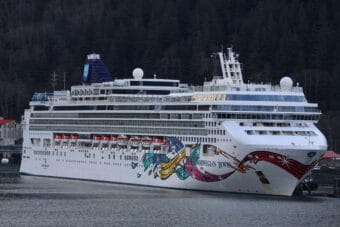
A Lingít village in Southeast Alaska plans to transform itself into a cruise ship destination to create a new economic opportunity as logging fades in the area.
The Alaska Native village corporation in Klawock is working with other Native corporations to install a relatively low-cost floating dock and make other upgrades to receive cruise ships in the village starting a year from now, project officials said.
Klawock is on Prince of Wales Island, about 700 miles southeast of Anchorage. Alaska’s first cannery was built there more than a century ago and logging of old-growth trees continues, though much less than it once did.
Project officials are modeling the proposal after one in Hoonah, another Southeast village that turned itself into a cruise destination.
It plans to start with basic facilities like the floating dock, said Mary Edenshaw, chief operations officer for Klawock Heenya, the Native village corporation. Klawock is home to about 700 people, she said.
The ships will create opportunities for small business owners, wood carvers and other artisans, she said. Tour guides can shuttle guests to see wildlife and the village’s historic totem-pole park, or visit other landmarks on the island’s road system.
“This will create jobs, when jobs are potentially going away,” Edenshaw said.
The plans come after Sealaska, the region’s Alaska Native corporation, announced last year that it was ending its decades-old logging operations that had centered on Prince of Wales Island. The large Native corporation wanted to pursue more sustainable activities, it said last year.
Matt Carle, a spokesman with Sealaska, said Klawock’s plans can promote economic development not just in Klawock but in other villages on Prince Wales of Island.
The island is so remote many people never stop there, he said.
“Any time you travel in Alaska, it takes a day or two to get off the beaten path to really experience the rich and vibrant Alaska Native culture,” Carle said. “But in this case people can literally step off the ship and see this, and that’s really unique.”
The increasing emphasis on tourism in Klawock is happening two years after the COVID-19 pandemic halted most cruise sailings to the state.
In Southcentral Alaska, efforts are underway in Seward and Whittier to build new docks that will add to the flood of visitors to those towns.
Tiny Klawock plans to host relatively small cruise ships that bring about 600 people, Edenshaw said. Oceania Cruises plans to make the inaugural stop next May, she said.
Klawock’s mayor, Don Nickerson, said most residents support the village corporation’s idea. He’s heard concerns that Klawock will be overrun with people, but he believes Klawock Heenya will manage guests so that won’t be a problem, he said.
Nickerson said the village needs this opportunity. Logging opportunities have diminished and salmon fishing is struggling too, he said.
“I definitely think this will boost our economy,” he said. “This was a log-booming community in the ‘80s and ‘90s and part of the 2000s, and that has all gone away.”
The town’s weavers and carvers, including youth learning from elders, will be able to sell their work and share their talents, he said. It will be an authentic cultural experience compared to larger ports like in Juneau, he said.
“There is a lot of talent and history on our island,” he said. “Nothing will be manufactured, and everything will be man-made.”
Klawock Heenya is working on the project with Na-Dena`, an Alaska Native company focused on providing cultural-based tourism in Alaska.
Na-Dena` said in a statement last week that the Port of Klawock can accept cruise ships traveling from the north and south.
“With two separate fjord entrances, sailing in and out of the port treats cruisers to scenic views of the wildlife-rich archipelagos, dramatic mountains and lush islands,” the statement said.
Na-Dena` consists of Huna Totem and Doyon. Huna Totem is the village corporation for Hoonah that built Icy Strait Point into a cruise destination recognized for its ecological and cultural values. After starting with a small float dock in 2004, Icy Strait Point can now handle two massive cruise ships at a time, each bringing thousands of guests, with amenities that include a giant zip line ride and high-speed gondolas that replace buses.
Doyon is the Alaska Native regional corporation for the Interior that provides bus tours of Denali National Park and Preserve where it owns a nearby lodge.
Na-Dena` will work with Klawock to emphasize its traditions and values, said Russell Dick, president of Huna Totem, in a statement about the project.
Officials with the Klawock project declined to provide cost estimates.
The floating dock will be anchored to an old timber loading dock that today sees only a handful of ships a year through a private logging company, project officials said.
The village will build the dock and other facilities soon, Edenshaw said. Drinking water and bathrooms will be a construction priority.
“We’ll have to start with plumbing,” Edenshaw said. “There’s electricity to the dock, but we’ve never had to worry about that many people coming to this area.”


